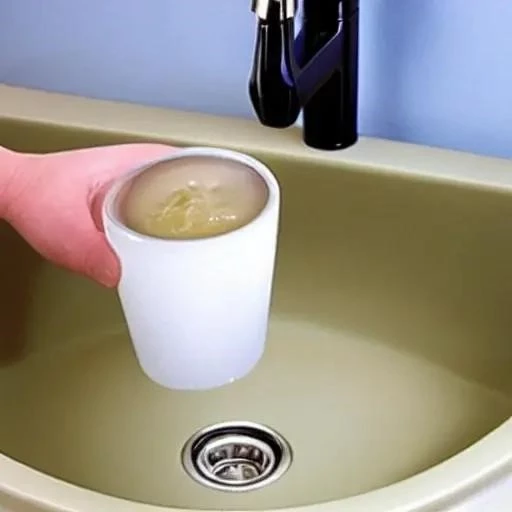The kitchen, often hailed as the true heart of any home, pulsates with daily activity, from morning coffee rituals to elaborate dinner preparations. At its core, quite literally, is the humble yet incredibly vital kitchen sink faucet. It’s a workhorse, a design statement, and a crucial component that dictates the flow and functionality of your culinary sanctuary. Yet, for many homeowners, the prospect of replacing an outdated, leaky, or simply aesthetically unpleasing faucet can feel like a daunting, professional-grade endeavor, often leading to procrastination and unnecessary expenses.
Imagine a kitchen where every detail reflects your personal style, where efficiency meets elegance, and where a persistent drip is a distant memory. This vision is not merely reserved for those with deep pockets or extensive plumbing knowledge. In an era where empowerment through information is paramount, mastering the art of connecting new kitchen sink faucets is remarkably within reach for the average enthusiast. By embracing a proactive, hands-on approach, you’re not just fixing a fixture; you’re investing in your home’s future, enhancing its value, and cultivating a profound sense of self-sufficiency. This guide is designed to transform apprehension into achievement, revealing how a few hours of focused effort can yield lasting satisfaction and a beautifully upgraded kitchen.
Essential Tools & Materials for Your Faucet Upgrade
Before embarking on this rewarding journey, meticulous preparation is key. Having the right tools and components at your disposal ensures a smooth, efficient installation process, minimizing unexpected trips to the hardware store and maximizing your success. This table outlines the fundamental items you’ll need to confidently tackle your kitchen faucet replacement.
| Category | Item | Description | Reference/Why It’s Needed |
|---|---|---|---|
| New Faucet Components | Kitchen Sink Faucet | Your chosen new faucet with all included mounting hardware, gaskets, and instructions. | The star of the show; ensure it matches your sink’s hole configuration. |
| Basic Tools | Adjustable Wrench | For tightening supply lines and mounting nuts. | Versatile for various nut sizes. |
| Basin Wrench | Specialized tool for reaching nuts in tight spaces under the sink. | Indispensable for older, hard-to-reach faucets. | |
| Phillips & Flathead Screwdrivers | For removing/installing mounting screws or aerators. | Standard household tools. | |
| Utility Knife or Box Cutter | For cutting sealant or opening packaging. | Handy for various tasks. | |
| Plumbing Essentials | Plumber’s Putty or Silicone Sealant | To create a watertight seal between the faucet base and the sink. | Prevents leaks around the faucet base. |
| Teflon Tape (PTFE Tape) | For sealing threaded connections on supply lines. | Ensures leak-free connections on male pipe threads. | |
| Flexible Water Supply Lines | New hot and cold supply lines (often not included with faucet). | Connects the faucet to your home’s water supply; replace old ones for reliability. | |
| Safety & Cleanup | Bucket & Sponges/Towels | To catch drips and clean up water; | Essential for managing spills during disconnection. |
| Safety Glasses | Protects eyes from debris or unexpected splashes. | Always prioritize safety. | |
| Work Light or Headlamp | Illuminates the dark under-sink cabinet. | Crucial for visibility in confined spaces. | |
| Official Reference | Manufacturer’s Installation Guide | Specific instructions provided with your new faucet. | Home Depot Faucet Installation Guide (Example Link) |
The Blueprint for Success: A Streamlined Installation Journey
With your arsenal of tools ready, the actual installation process unfolds into a series of logical, manageable steps. Think of it less as a complex engineering feat and more as assembling a sophisticated puzzle, each piece fitting perfectly to create a seamless, functional whole. The initial phase involves the methodical removal of the old faucet, a process that frequently proves more challenging than the installation itself due to accumulated grime, rust, and stubborn nuts. Begin by turning off the water supply, both hot and cold — usually found under the sink or at the main house shut-off valve. Subsequently, drain any residual water by opening the old faucet, preventing unexpected deluges.
Disconnecting the existing supply lines and removing the mounting hardware frees the old fixture from its long-held position. This crucial juncture offers a prime opportunity to thoroughly clean the sink surface, removing any mineral deposits, old caulk, or debris, thereby ensuring a pristine foundation for your new installation. By integrating insights from seasoned plumbers, we understand that a clean surface is incredibly effective in guaranteeing a watertight seal, preventing future leaks. Once the old faucet is gone, the exciting part begins: preparing the new faucet. Most modern faucets come with pre-attached supply lines or straightforward connections, simplifying this critical stage significantly. Apply plumber’s putty or a bead of silicone sealant around the base of the new faucet, creating an impenetrable barrier against water infiltration, a small step that yields immense long-term benefits.
Connecting the Lifelines: Water, Function, and Flourish
Carefully position the new faucet into the sink holes, ensuring it’s properly aligned and centered. From underneath the sink, secure the faucet using its mounting hardware, typically a large nut or a series of screws, tightening them firmly but without excessive force, preventing damage to the fixture or the sink. This is where your basin wrench truly shines, granting access to those notoriously tight spots. Next, attach the new flexible water supply lines to the faucet’s hot and cold inlets. Remember to use Teflon tape on the threaded connections, wrapping it clockwise two or three times to create an additional layer of leak protection. Connect the other ends of these supply lines to your home’s shut-off valves, again ensuring a snug, secure fit without overtightening.
For faucets with sprayers or soap dispensers, follow the manufacturer’s specific instructions for connecting these auxiliary components. Modern designs often feature quick-connect fittings, simplifying what once were complex plumbing tasks. Once all connections are made, double-check every nut and bolt for tightness. Slowly turn the water supply back on, first at the shut-off valves under the sink, then at the main if you turned it off there. Crucially, meticulously inspect all connections for any signs of leakage. A small drip caught early can save you from significant water damage down the line. Run both hot and cold water through the new faucet for several minutes, flushing out any air or debris from the lines, ensuring optimal performance from day one.
Beyond the Basics: Expert Perspectives and a Forward-Looking Kitchen
Industry experts consistently highlight the long-term value of quality installation. “A properly installed faucet isn’t just about functionality; it’s about peace of mind,” notes Sarah Chen, a leading kitchen designer. “Homeowners often underestimate the impact of a well-chosen and correctly fitted faucet on their daily lives and their home’s overall aesthetic.” Furthermore, the market is brimming with innovative faucet technologies, from touchless activation to integrated water filtration systems, all designed to elevate your kitchen experience. Installing these advanced fixtures, while requiring a slightly deeper dive into their specific instructions, still follows the fundamental principles outlined here, empowering you to embrace the future of kitchen convenience.
Having successfully navigated the installation, you’ll not only enjoy a fully functional, leak-free faucet but also a profound sense of accomplishment. This DIY undertaking dramatically reduces costs associated with professional installation and provides invaluable practical experience. Your kitchen, now graced with a new, sparkling faucet, becomes a testament to your capability, a vibrant space ready for countless culinary adventures. Embrace this opportunity not just as a repair, but as an investment in your home’s future, making your kitchen a truly forward-looking, efficient, and beautifully personalized hub of activity.






